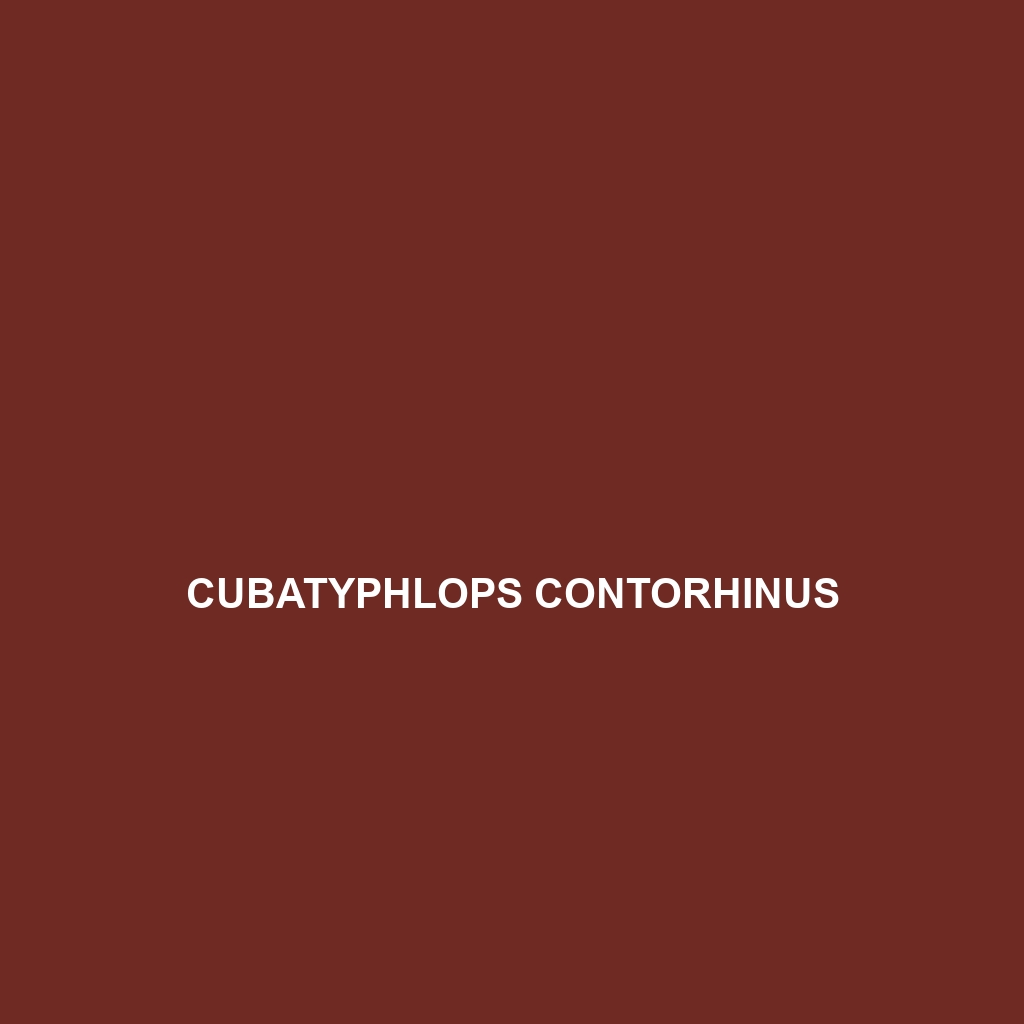Species Description of Cubatyphlops caymanensis
Common Name: Cubatyphlops caymanensis
Scientific Name: Cubatyphlops caymanensis
Habitat
Cubatyphlops caymanensis is primarily found in the Caribbean, particularly on the Cayman Islands. This species thrives in limestone caves and shallow soil environments that provide a humid atmosphere. They are often located in tropical rainforests, utilizing the moist underground habitats that are essential for their survival.
Physical Characteristics
Cubatyphlops caymanensis typically measures between 10 to 15 inches in length, making them a relatively small species of blunt-headed snake. Their coloration ranges from light brown to grey, often with darker patterns that help them blend into their cave surroundings. A distinctive feature of this species is their reduced eyesight, which is indicative of their subterranean lifestyle. Their elongated, cylindrical bodies allow for easy navigation through soil and narrow spaces.
Behavior
This species is primarily nocturnal, engaging in most of its activities, such as foraging for food, at night. Cubatyphlops caymanensis displays burrowing behavior, using its specialized body shape to navigate through tunnels and loose soil. They are known to be solitary creatures, typically coming together only during mating seasons.
Diet
The diet of Cubatyphlops caymanensis consists primarily of small invertebrates, such as ants and termites. Their feeding habits involve probing the soil to locate and consume these prey items. They rely heavily on their keen sense of smell to hunt their food, which plays a crucial role in their overall survival within their niche ecosystem.
Reproduction
Cubatyphlops caymanensis exhibits oviparous reproduction, meaning they lay eggs. Breeding typically occurs in the wet season, with females laying a clutch of 3 to 10 eggs per breeding cycle. Notable behaviors during mating include territorial displays and pheromone signaling. After hatching, the young snakes are independent and must fend for themselves immediately.
Conservation Status
The conservation status of Cubatyphlops caymanensis is currently classified as endangered due to habitat destruction and the impact of invasive species on their natural environment. Conservation efforts are essential to preserve their habitats and ensure the survival of this unique snake species.
Interesting Facts
One intriguing fact about Cubatyphlops caymanensis is their unique adaptations for life underground, including a highly developed sense of smell and the loss of developed eyesight. These adaptations make them one of the rare specialists in the Cayman Islands’ unique cave ecosystems.
Role in Ecosystem
Cubatyphlops caymanensis plays a vital role in controlling the population of small invertebrates in its ecosystem. By feeding on ants and termites, this species helps maintain the balance within the food web in limestone cave environments. Their presence also indicates the health of their subterranean habitat and the overall biodiversity of the area.
